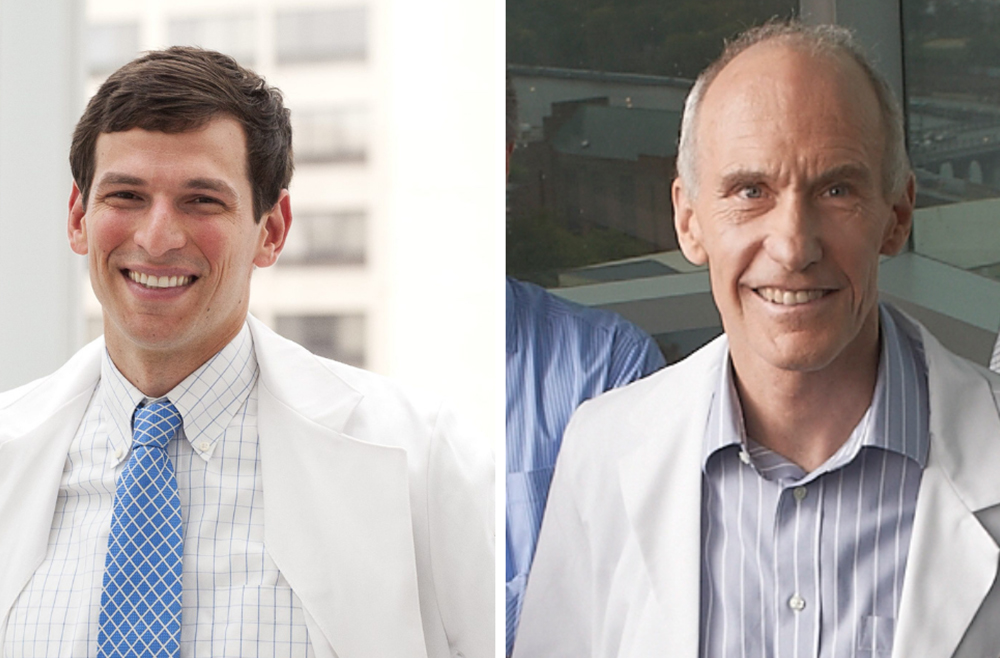
PHILADELPHIA — One of the most elusive aspects for clinicians treating COVID-19 is the body's immune response to the virus. In the most severe cases of COVID-19, the immune system goes into overdrive, resulting in a fever, multi-organ system damage, and often death — a cytokine storm. But how to detect and treat a cytokine storm requires that clinicians can identify it as such.
Two Penn Medicine researchers have developed a unifying definition of "cytokine storm" to provide physicians with a framework to assess and treat severely-ill patients whose immune systems have gone rogue. Cytokine storms can be triggered by different pathogens, disorders, or treatments, from COVID-19 to Castleman disease to CAR T cell therapy.
In a paper published today in the New England Journal of Medicine, David Fajgenbaum, MD, MBA, MSc, an assistant professor of Translational Medicine & Human Genetics and director of the Center for Cytokine Storm Treatment & Laboratory (CSTL), and Carl June, MD, a professor of Pathology and Laboratory Medicine and director of the Center for Cellular Immunotherapies in the Abramson Cancer Center, and the Parker Institute for Cancer Immunotherapies define a cytokine storm as requiring elevated circulating cytokine levels, acute systemic inflammatory symptoms, and secondary organ dysfunction beyond what could be attributed to a normal response to a pathogen, if a pathogen is present.
"There has never been a defining central review of what a cytokine storm is and how to treat one, and now with COVID-19, that is a major issue," said Fajgenbaum, a Castleman disease patient who has previously experienced five cytokine storms himself. "I've spent the last 10 years of my life as a cytokine storm patient and researcher, so I know the importance of having a comprehensive unified definition to find therapies that work across the various types of cytokine storms." Fajgenbaum's CSTL has discovered novel therapeutic approaches for the cytokine storm with Castleman disease, including a treatment that Fajgenbaum is taking himself and studying in a clinical trial.
There is widespread recognition that the immune response to a pathogen, but not the pathogen itself, can contribute to multi-organ dysfunction and other symptoms. Additionally, similar cytokine storm syndromes can occur with no obvious infection.
This has led to the investigation of immunomodulators and cytokine-directed therapies to treat cytokine storm in patients. One of the earliest targeted therapies developed to stop a cytokine storm was the anti-interleukin-6 (IL-6) receptor monoclonal antibody tocilizumab to treat a type of Castleman disease in the 1990s. Eight years ago, for the first time, Penn researchers led by June's team treated cytokine storm following CAR T cell therapy in a pediatric blood cancer patient with tocilizumab — which was later approved by the U.S. Food and Drug Administration for cytokine storm treatment after CAR T therapy.
A host of other disorders have also been described as causes of cytokine storm and targeted with immune-directed therapies, such as sepsis, primary and secondary hemophagocytic lymphohistiocytosis (HLH), autoinflammatory disorders, and now SARS-CoV-2.
Fajgenbaum and June report that it is typically easy to identify cytokine storm in disorders with elevated cytokines where there are no pathogens. However, the line between a normal and a dysregulated response to a severe infection — like COVID-19 — is blurry, considering that certain cytokines may be both helpful in controlling an infection and harmful to the individual. The interdependence of these inflammatory mediators makes it even more complex.
"When COVID-19 hit, it reminded us how critical it is to define the difference between this hyper immune response and an appropriate inflammatory response," June said. "Our goal here is to chart a clearer path forward by putting clinical teams in a better position to recognize and appropriately manage a cytokine storm caused by the coronavirus and other triggers."
Fajgenbaum and June maintain that the approach to evaluating a patient with cytokine storm should accomplish three main goals: identifying the disorder underlying the cytokine storm and ruling out conditions that may mimic cytokine storm, establishing severity, and determining the optimal therapeutic approach for the patient.
Targeted therapeutic approaches for cytokine storm in Castleman disease, HLH, and CAR T cell cancer immunotherapy have turned these deadly conditions into often reversible states. The CSTL has been searching for and systematically tracking treatment approaches for COVID-19 to identify similarly promising treatments. Given advances in integrated analysis across systems — like the genome, microbiome, epigenome, transcritptome, etc. — called multi-omics, and therapeutic modulation of the immune system, as well as concerted efforts to work across the cytokine storm umbrella, Fajgenbaum and June expect to see continued improvements in outcomes.
"We wanted to create a definition that was really exhaustive of the various cytokine storms that can occur — what causes them, what are some of the underlying mechanisms, and maybe most importantly, what are our current therapy options and what needs to be done in the future to make treatment of cytokine storm more effective," Fajgenbaum said.






